A couple weeks ago, a coworker had mentioned how he had a flat tire (picked up a nail or screw) and needed to get it patched at a tire shop. I was surprised that this coworker couldn’t patch it himself in his garage (didn’t have the tools or the know-how). It got me to thinking of what would happen if he had a tire puncture away from home and couldn’t just call roadside assistance.
The tools to repair a basic tire puncture are actually inexpensive with the most basic kits you find at the local auto parts stores running around $10 while robust kits with more durable tools and more repair materials can run anywhere from $25 to $50 or more.
As far as the know-how, patching a tire for a basic nail, screw, or other puncture is also relatively easy and there are plenty of videos on YouTube that you can refer to if the instructions that come with the tire repair kit are not sufficient.
Repairing a tire at home in the garage is always the easiest because you have access to your repair kit/tools or can use another vehicle (or walk) over to the auto store if you don’t have a kit.
But when you’re away from home and maybe in the middle of nowhere and you get a tire puncture, you’re going to be out of luck unless you pack a kit in the vehicle, which is what I do.
I actually picked up the ARB Speedy Seal Series 2 tire repair kit a while back for carrying in my Jeep. It’s a nice kit with stout reamer and plug tools, and comes with:
- Hardened steel reamer tool
- Spring steel insertion needle tool
- Jar of lubricant
- Valve core tool, spare valves, valve stems, and valve caps
- 40 self-vulcanizing repair cords
- Allen key supplied for tool disassembly
- Steel needle nose pliers with cutter and hardened teeth grippers
- Blade for neat cutting of repair cords
- High visibility orange blow molded case
If you watched the video earlier in the post on how to use a tire repair kit, you’ll notice this doesn’t come with glue. The self-vulcanizing repair cords don’t need glue.
This kit is handy but the case itself is not very compact. It takes up a lot of space and I can’t fit it in the under-mat compartment of the Jeep’s cargo area since I already have other gear stowed in there.
I ended up reducing the bulk and attaching it to a more accessible location (on the sideracks in the cargo area) by putting the kit in an Orca Tactical MOLLE Rip-Away EMT Medical First Aid Pouch which in turn was mounted to my existing Springtail Solutions Side Rack.
As I mentioned in a prior article on my Jeep medical kits, the Orca Tactical rip-away pouch secures to MOLLE but can tear away quickly (and be remounted quickly).
The Orca Tactical MOLLE Rip-Away EMT Medical First Aid Pouch serves well as a carrying case for the ARB Speedy Seal Series 2 tire repair kit because it is much more compact and eliminates the dead space found in the ARB provided case.
In about half the size of the ARB provided case I am able to carry all the tools and supplies from the ARB Speedy Seal Series 2 tire repair kit and even more.
One additional item I put into my tire repair kit pouch are the Colby Valve Emergency Tire Valves (2-Pack). While the ARB kit has replacement tire valves, the emergency valves from Cobly Valve are designed to be an easy-to-install, tool-less tire valve replacement for emergency use. I saw these online and was impressed by the demonstration videos.
I ended up throwing a pair of valves in my Jeep because I felt like these were great in the event there is a scenario where the valve parts in the ARB kit are not suitable or if time is a factor.
Note that the Colby “Emergency Tire” Valves are not meant for permanent use, but they are reusable. If you were to use one of the emergency valves out on the trail, you would do a more permanent valve repair once you got back home or to a tire shop (and reattach the TPMS).
Colby Valve does make a permanent valve replacement kit, but even then, it does not support the standard Tire Pressure Monitoring Sensors on a Jeep Wrangler or any type of TPMS that is connected to the inside portion of the tire valve.
Of course, tire repair while on the trail, on the road, or otherwise away from home can be hindered without a way to reinflate the tire. While a very uncommon VEDC solution, I keep a Power Tank CO2 system (10lb CO2 tank with 400 PSI regulator) in the Jeep.
This is a very fast way to reinflate tires that I use after airing down for off road as I can easily inflate from 15 PSI up to 35 PSI in less than one minute per tire.
My air inflation accessories are kept in an ammo can in the driver’s side Springtail Solutions Side Rack that includes my tire inflator tool which has a digital gauge. I also have another analog air pressure gauge in the rear of the Jeep. I would use these either of these gauges rather than the pencil-style gauge included with the ARB kit (although the pencil gauge is retained for redundancy) to confirm tire pressure.
The Power Tank CO2 system is a bit overkill for regular vehicle tire repair kits. For emergencies, inexpensive tire inflators are available and easily stored in the trunk of most vehicles.
Portable tire inflators can be acquired for around $40. They are slow (and require cooling time after being used), but definitely sufficient to reinflate a tire in an emergency. If you feel like you need a compressor that can reinflate a tire faster (or more tires in a short amount of time), the VIAIR family of portable compressors have better duty cycles (can operate longer between cool downs), but are more expensive.
Anyway, that sums up my vehicle everyday carry tire repair setup for my Jeep Wrangler. I actually might pick up an ARB High Performance On-Board Air Compressor or even the ARB Maximum Output (Twin) On-Board Air Compressor, and run it along with the Power Tank CO2 system. The one negative of a CO2 system as the on-board air for tire reinflation is that the CO2 in the tank is finite and will need to be refilled. Thus, if I were to suddenly run out of CO2 in the tank and still need get a tire reinflated, having a compressor will be beneficial.

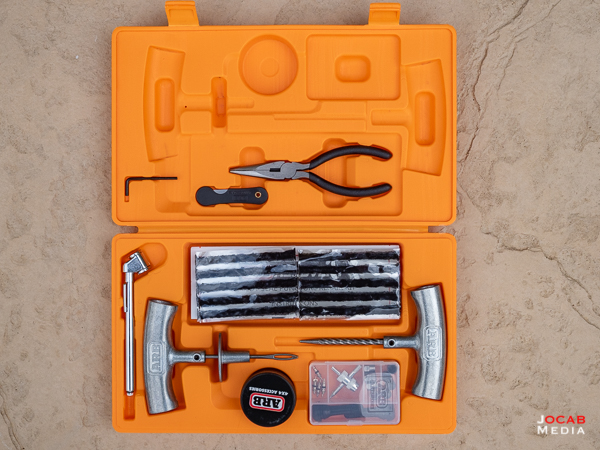
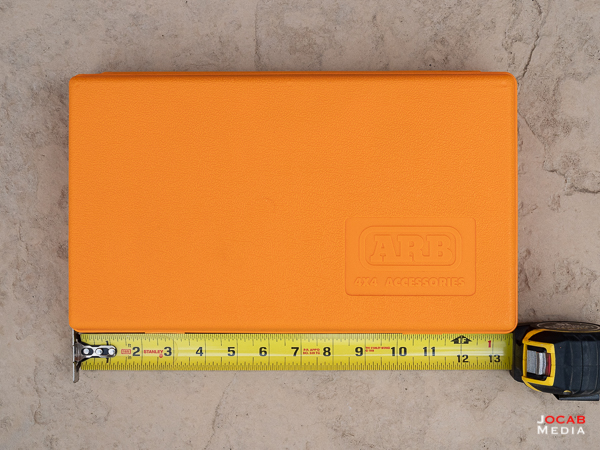
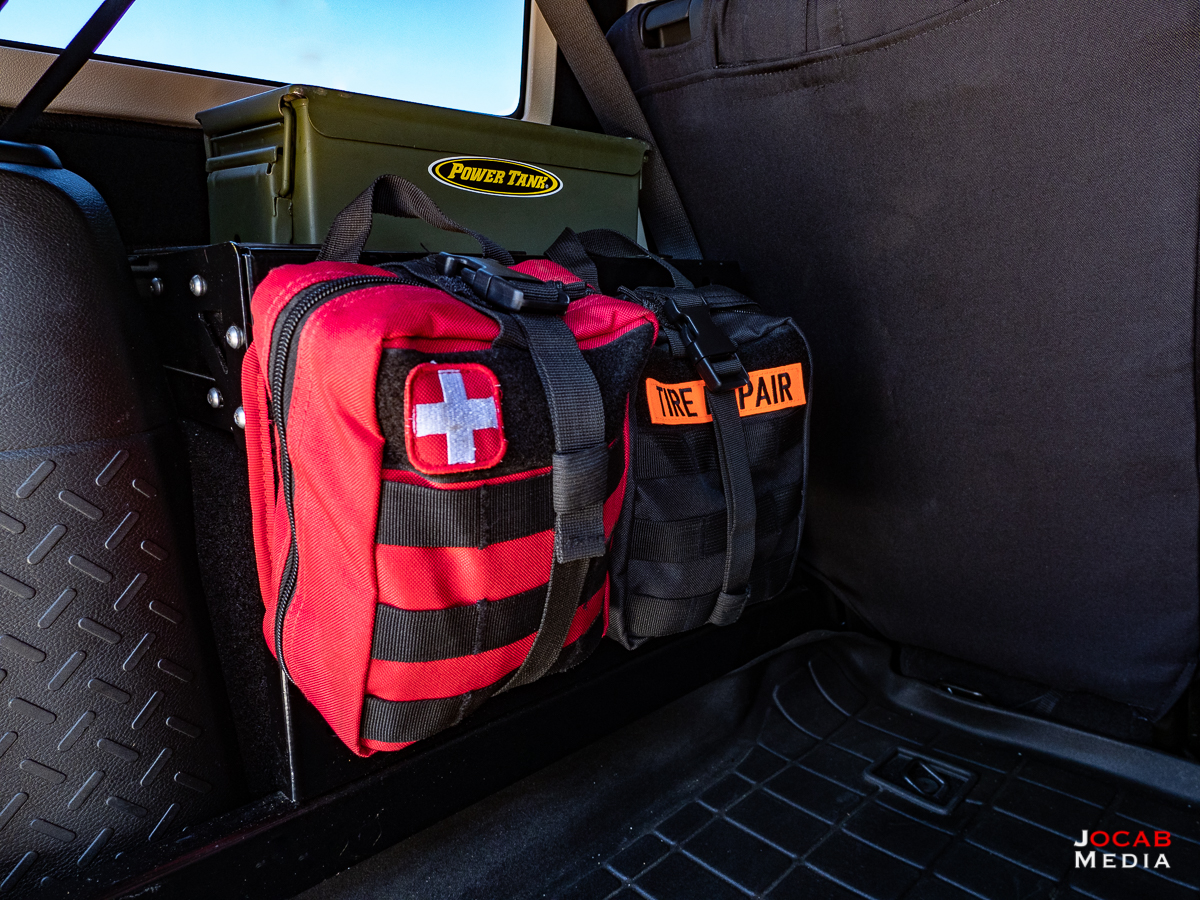
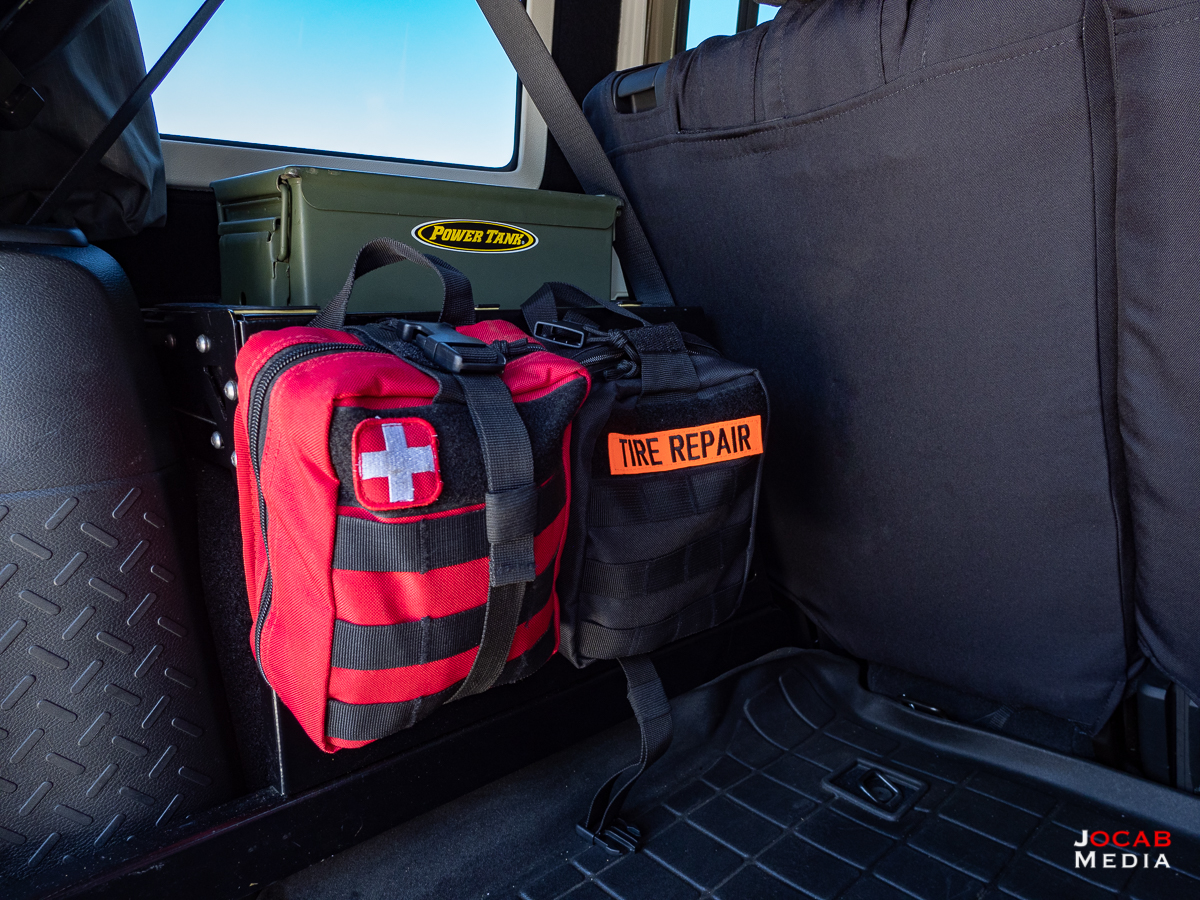
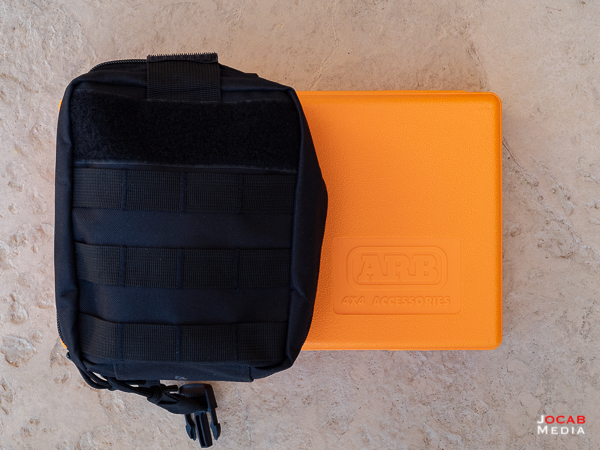
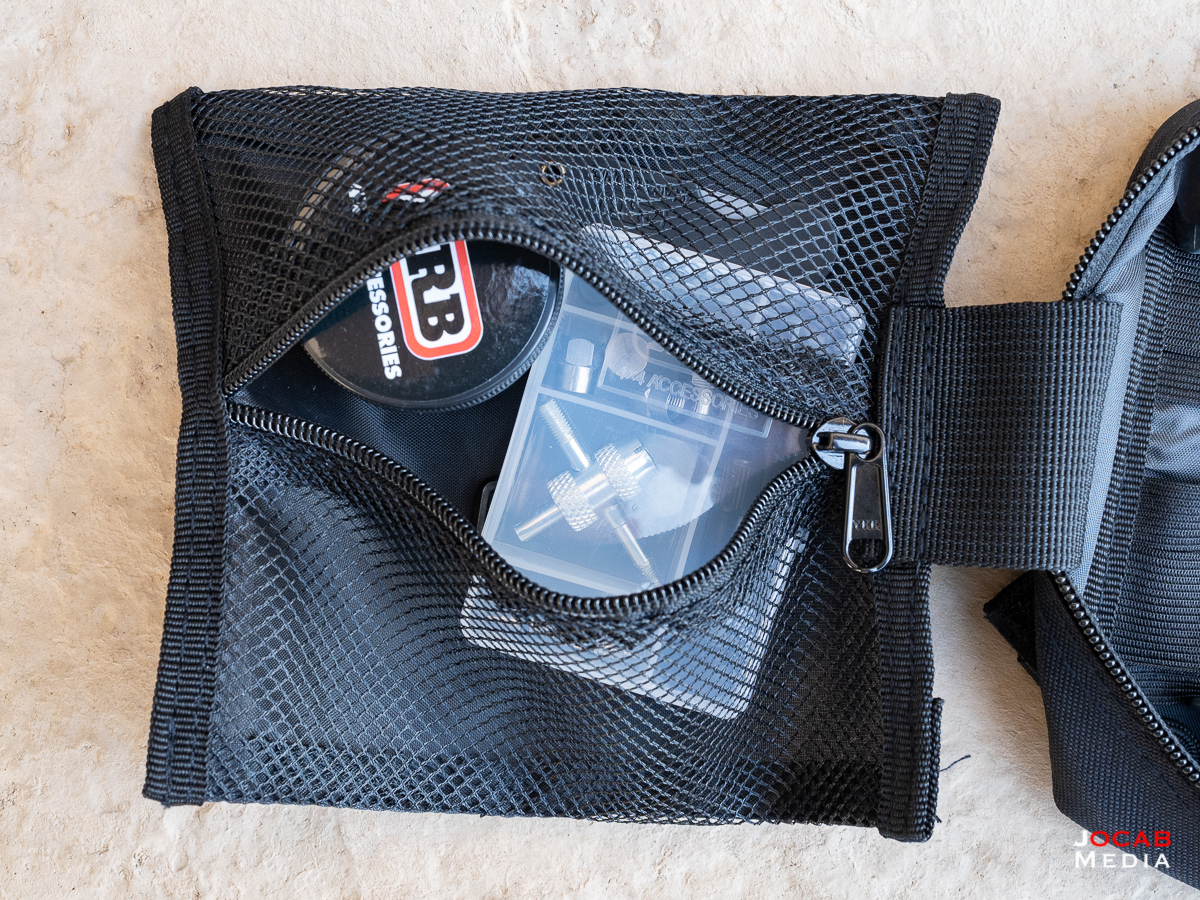
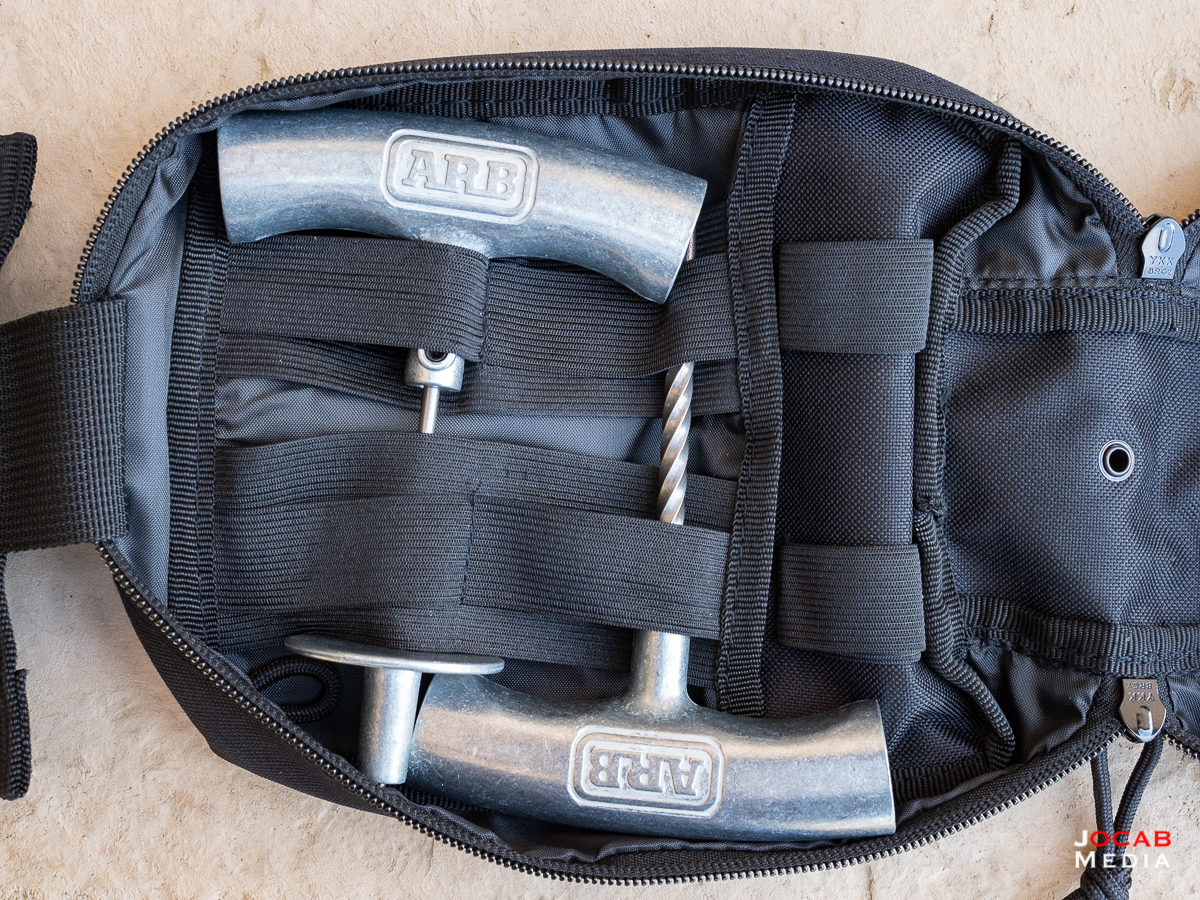
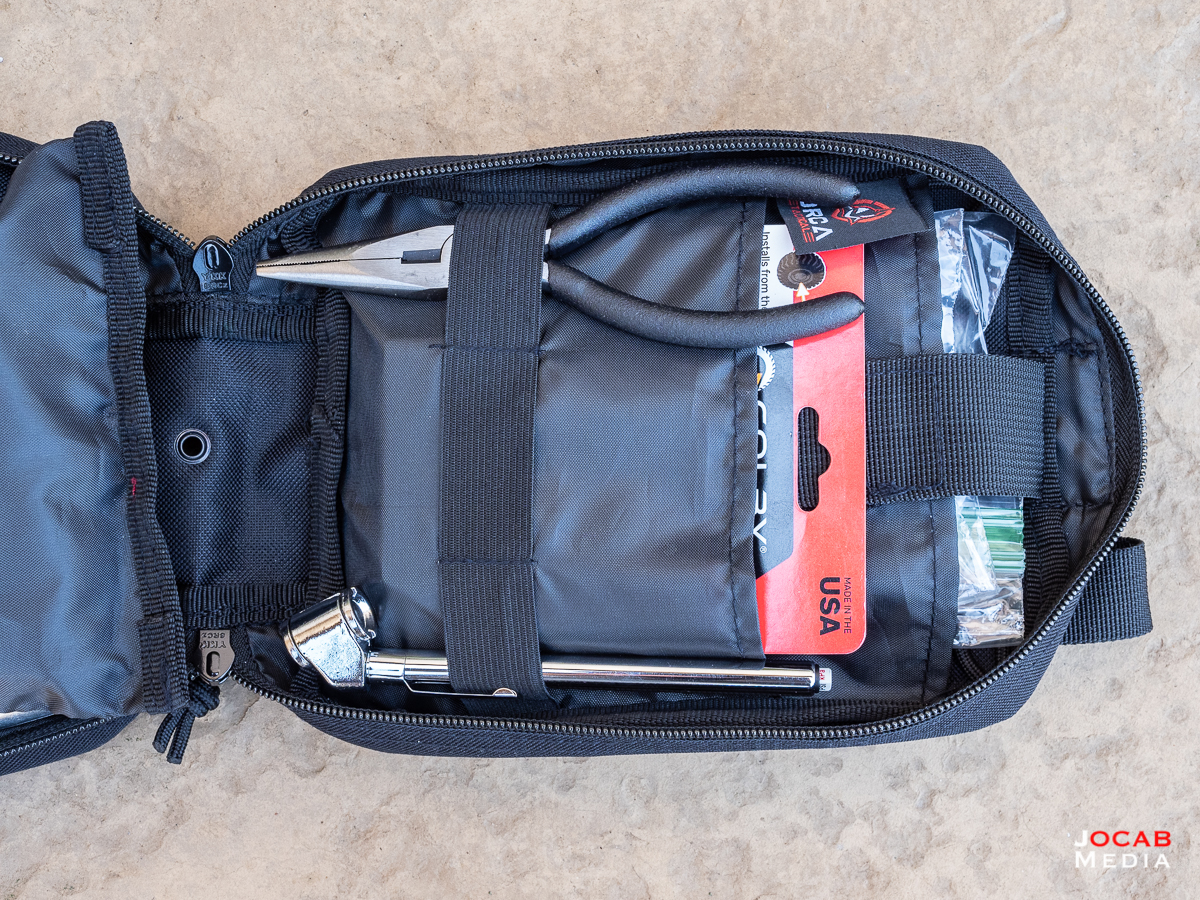
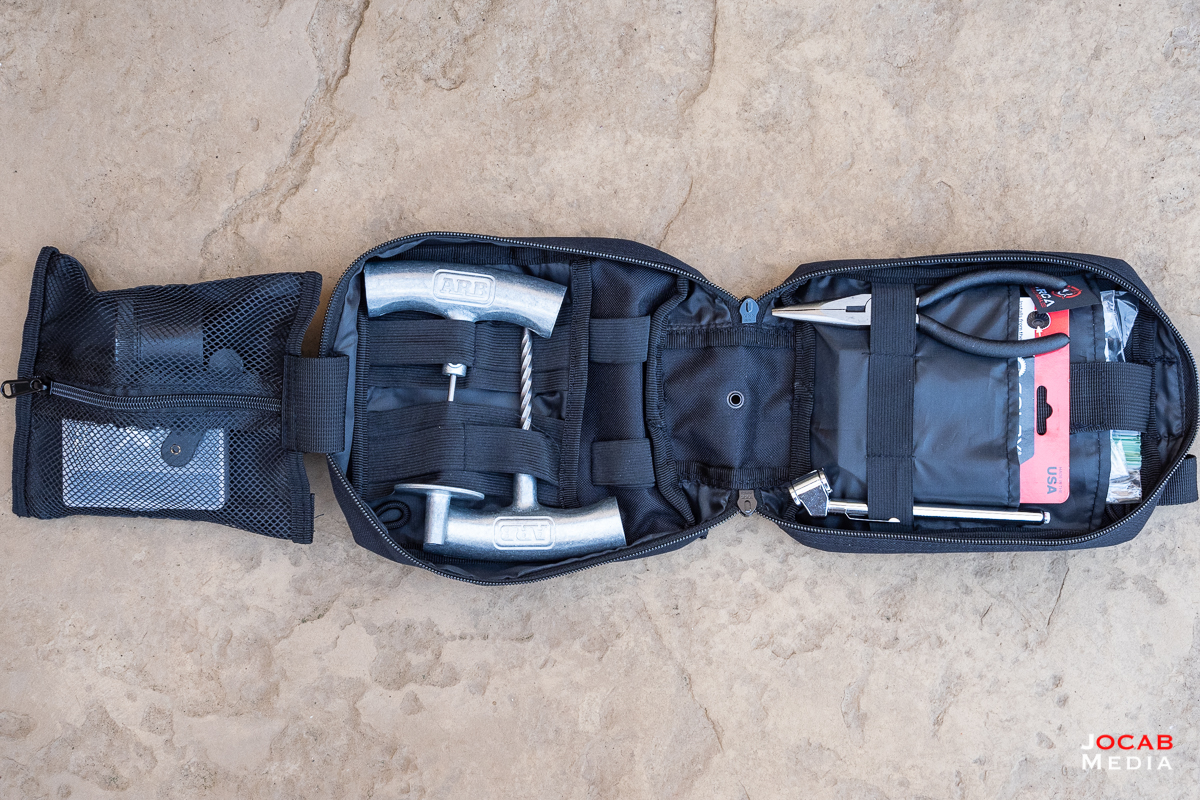
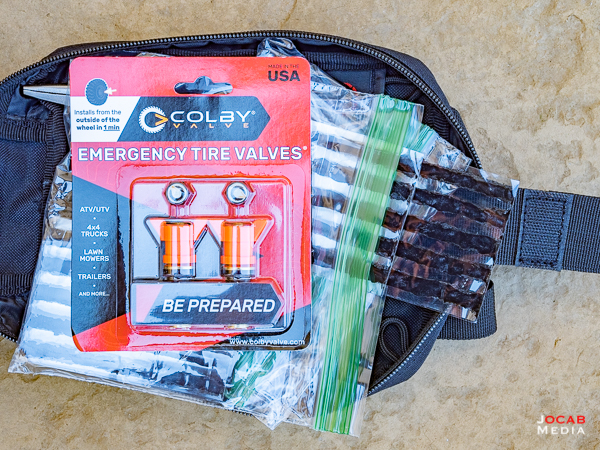
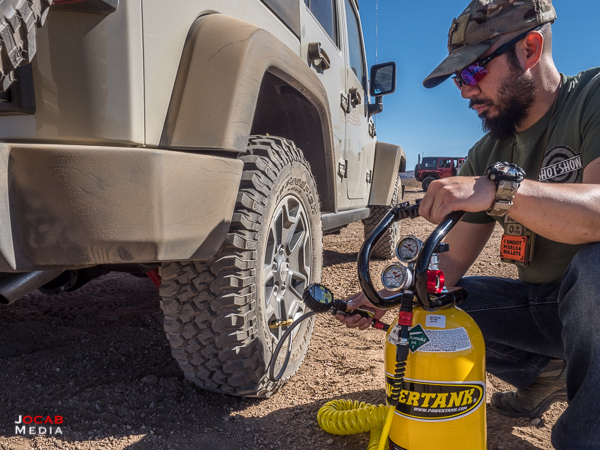
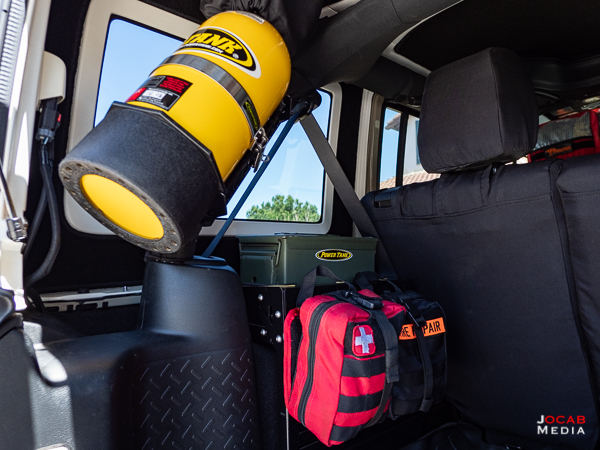
Dave Stein
Hi Jonathan, how did you create the “Tire Repair” label on the molle pouch?
Jonathan Ocab
Look for anyone who can make “nametapes” with hook backing (Velcro). 1800nametape.com is one such vendor.